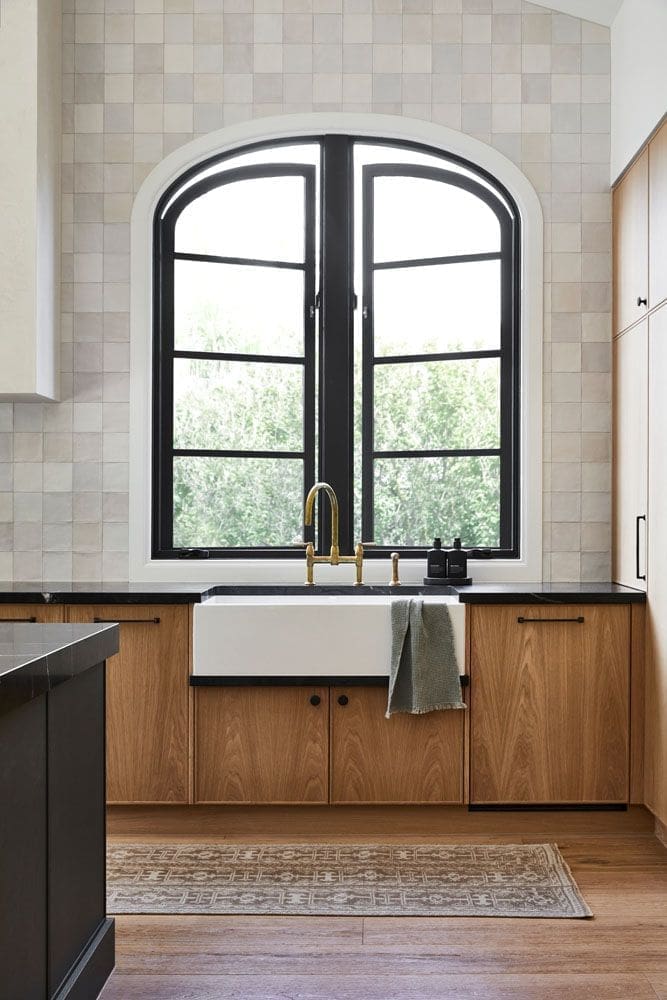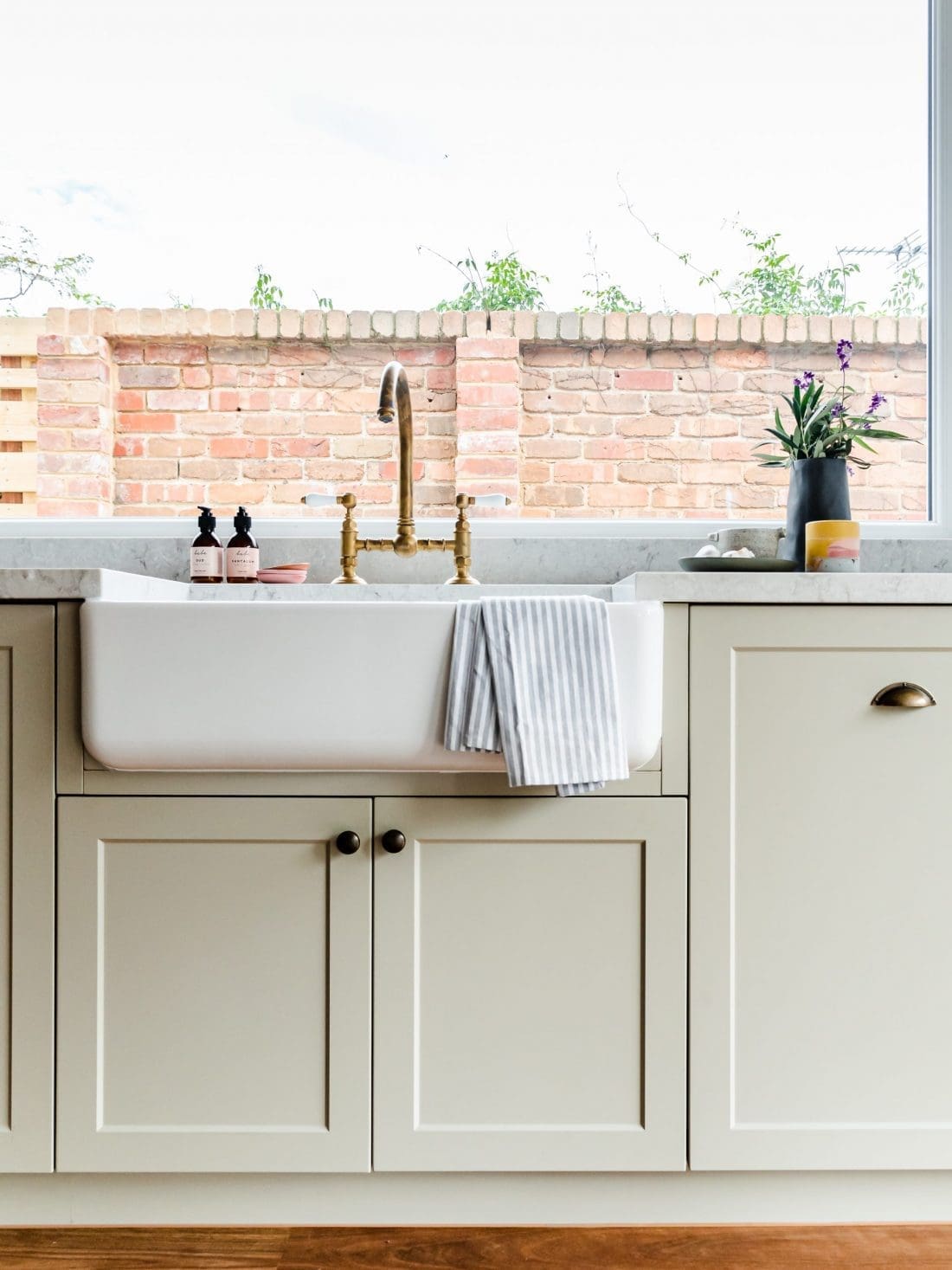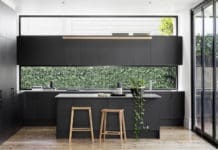As the heart of the home, your kitchen should be both functional as well as meet your design aesthetics. Anyone who’s done a kitchen renovation in the past knows full-well the stress and chaos that comes with it. Especially when it comes to the plumbing. We’ve compiled nine kitchen plumbing tips to make your project a little less stressful.
From how to minimise costs to avoid kitchen reno regret, keep on reading for all the kitchen plumbing tips you need!
Related article: Common plumbing problems in old homes
Related article: Your dream kitchen renovation checklist: Easy steps to create a stylish and functional kitchen

Written by Metropolitan Plumbing
1. Do get a big enough kitchen sink and choose the right placement
Few things are more annoying than trying to wash a pan that’s too big for your sink. Dirty water gets splashed everywhere — including on you — and it takes longer than needed!
Many kitchen designers recommend selecting your sink and its placement as the first step in your new kitchen renovation. The right kitchen sink will be one that’s both functional and meets your design aesthetics.
For practicality’s sake, double bowl sinks are the way to go. You can find this type of sink in a range of shapes, sizes and styles too, so it will be easy to find one to suit your design direction.
While a big sink is the dream, you’ll also need to consider any extra fixtures you’ll want to install around it and make sure there’s space for them and their associated plumbing. For example, zip tapes with instant hot, cold or sparkling water are becoming increasingly popular.
When it comes to the placement of your sink, you’ll need to consider where the ideal position is in terms of functionality and the end look of your kitchen, as well as where the existing plumbing fixtures are if you’re renovating.

2. Do put the dishwasher next to the sink
With our hectic schedules and busy lives, dishwashers are an essential kitchen inclusion. There’s only one logical spot to put your dishwasher, and that’s right next to your sink. Specifically on the drainer side if you have a double bowl sink.
This setup is ideal for ease of installation, reduced costs and also practicality. Because your sink is here, you already have existing water connections nearby. This means your dishwasher is essentially plug and play, no extra pipes need to be run anywhere.
Not only does this make installation easy, but it also means you don’t have to pay extra money to have new water connections and pipes extended. Some kitchen layouts don’t allow for this setup, however, and so this extra cost might be unavoidable.
More importantly, it’s the most practical position for a dishwasher as most people tend to put their dirty dishes next to or in the sink, rinse them and then stack them in the dishwasher. Having your dishwasher right next to the sink reduces the time you’ll be spending washing up.
3. Don’t select a kitchen tap purely based on size or appearance
Bigger is not always better applies in many cases, including your kitchen sink tap. While a heavy duty, industrial-sized mixer tap might sound like it will make cleaning up a breeze, there are some downsides you’ll need to consider.
Large mixer taps require proper bench support, more space for installation and are generally more expensive. You may be better off with a mid-range mixer tap that will easily fit in your domestic kitchen.
Likewise, it’s not wise to choose a tap just because it fits your design aesthetic. No matter how trendy it might be, it needs to be functional above all else. Consider if having a pullout is important to you, if you prefer a single tap or separate hot and cold taps… and if you really want to get fancy, some taps even have voice control when connected to smart home devices.

4. Do use your existing plumbing as much as possible
One way to save money on your new kitchen renovation is to use the existing plumbing layout. Cutting concrete, extending water connections, all of this requires additional labour and so risks blowing out your renovating budget.
Many people tend to forget about the extra costs of moving your plumbing fixtures around. This can often be the source of much kitchen renovation stress and unexpected additional costs.
5. Do be water and energy-efficient wherever possible
A new kitchen renovation is a good time to change up your existing kitchen appliances. Selecting energy-efficient, water-efficient and eco-friendly appliances are a great way to do your part for the environment, as well as help to save money in the long run on your bills.
You can also opt for water-saving taps for your kitchen sink, further helping to cut back on your water bills. When it comes to looking at water efficiency, you can easily compare different appliances by their water rating label. The same can be said for energy efficiency with the Energy Rating Label.

6. Do consider your overall kitchen layout
On the topic of using your kitchen’s existing plumbing, sometimes it just doesn’t make sense to keep things the same. Refreshing the layout can make design sense — giving you greater storage or bench space, opening up your home, or improving flow.
Regardless of how beautiful your kitchen is, if it’s not functional you won’t enjoy it. Your kitchen’s layout should achieve a few things, including:
- minimising space between main fixtures, appliances and preparation areas
- allow enough space for easy movement and for full use of appliances
- stove ovens on the exterior wall for easier ventilation installation
- island bench within arms reach of all major appliances, but not too close that it impedes movement.
Being able to visualise where your plumbing and gas fixtures need to be moved for your new kitchen layout is very helpful for your plumber. Keeping all your fixtures near to each other can also help to reduce the cost of extending your plumbing pipes.
7. Don’t install a food waste disposal if it’s not necessary
While it might make washing the dishes easier, a food waste disposal system installed in your sink comes with a number of drawbacks. Firstly, there’s the limitation of what kind of sinks you’re able to have — a food waste disposer needs a large drain outlet.
Then there’s the fact that more often than not, if it breaks down you’ll need to replace it entirely, rather than just repair it. If it’s not maintained properly, a food waste disposal system can make your kitchen smell badly too.
The far better alternative for both your wallet, the environment, and even your garden is to put all your food scraps into a compost bin. Find tips on starting a compost here.

8. Do measure everything twice
Your appliance might be labelled as ‘standard size’, but this sizing can vary by a few millimetres between brands. And a few millimetres can be all it takes for your dishwasher to be sticking out from your kitchen bench, or worse yet, not to fit in the cavity allocated.
It’s important you get the right measurements for any appliances you’re having installed in your cabinetry. This needs to include any plumbing that might be required too. The best way to do this is to provide product specs to your kitchen designer or whoever will be installing the kitchen so they know exactly what they’re working with.
9. Do make sure you have enough water connections
Butler’s pantries with sinks, fridges with water dispensers and ice makers, water filters and dishwashers are becoming increasingly popular in modern kitchens. It’s important you include enough water connections in your kitchen renovation to allow for all these fixtures and appliances.
Not sure you want to install all these appliances right now? It can be more cost-effective to install these connections now so you have the provision rather than in the future where your plumber would have to work around your fully-built kitchen.

10. Do install a stop tap under your kitchen sink
Ever had your kitchen sink’s flexi hose burst and get water everywhere? While a kitchen renovation won’t stop this from occurring, you can easily install a stop tap under your sink that at least minimises the clean up after.
A stop tap allows you to isolate water to your kitchen so you can turn the water off to this area in an emergency. Water remains connected to the rest of your house though, so you can keep going on with your day.
Plumbing is only one component of your overall kitchen renovation, but it’s certainly an area most of us are unfamiliar with. These kitchen plumbing tips can help to demystify the complexities behind your kitchen’s plumbing so you can focus more on the details of your renovation.






